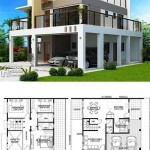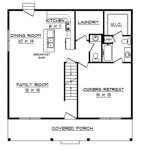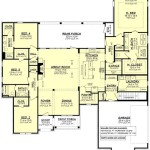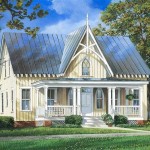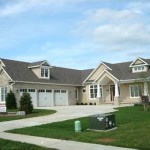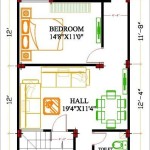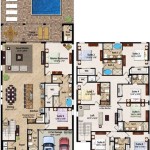Free Bat House Plans: Build A Home For Beneficial Creatures In Virginia
Virginia's diverse ecosystems provide habitat for a variety of bat species, each playing a crucial role in insect control and ecosystem health. Unfortunately, habitat loss and other environmental stressors have negatively impacted bat populations. One practical and effective way to support these vital creatures is by providing artificial roosting habitats through the construction and installation of bat houses. This article details the benefits of bat houses and provides free bat house plans tailored for Virginia's climate and bat species, allowing individuals to contribute to bat conservation efforts.
Bat houses offer a safe and secure alternative roosting location, particularly for bats that have lost their natural roosts in trees or buildings. These structures provide protection from predators, offer stable temperature and humidity levels, and can serve as maternity roosts where bats raise their young. By providing suitable habitat, bat houses can encourage local bat populations to thrive, contributing to insect control and overall ecosystem health.
Selecting a bat house design appropriate for a specific region is vital for success. The design should consider the local climate, target bat species, and available materials. Furthermore, proper installation and maintenance of the bat house are equally important to ensure its usability and longevity. By understanding these factors and utilizing well-designed plans, individuals can effectively contribute to bat conservation efforts in Virginia.
Understanding the Benefits of Bats in Virginia
Bats are often misunderstood and feared, but they are essential components of Virginia's ecosystems. They are primarily insectivores, consuming vast quantities of insects, including mosquitoes, agricultural pests, and other nuisance insects. This natural pest control significantly reduces the need for chemical insecticides, benefiting both the environment and human health.
A single bat can consume thousands of insects in a single night. Multiplied by a colony of bats, this represents a substantial impact on insect populations. In agricultural areas, bats help to protect crops from damage, reducing economic losses for farmers. In residential areas, they help to control mosquito populations, making outdoor spaces more enjoyable.
Beyond insect control, some bat species also play a role in pollination and seed dispersal, although this is less common in Virginia compared to more tropical regions. Their guano, or bat droppings, is also an excellent natural fertilizer, rich in nitrogen, phosphorus, and potassium. This can be used to enrich garden soil and promote plant growth.
Despite their ecological importance, bat populations face numerous threats, including habitat loss, disease, and pesticide exposure. By providing bat houses, individuals can help to mitigate the effects of habitat loss and provide bats with safe and secure roosting locations, contributing to their long-term survival.
Choosing the Right Bat House Design for Virginia
Several bat house designs are suited for Virginia’s climate and bat species. The most common and effective designs are multi-chambered bat houses, which provide varying temperature ranges within the structure. This allows bats to move to different chambers based on their preferred temperature, optimizing their comfort and survival.
The ideal bat house should be made of durable, weather-resistant materials. Untreated cedar or plywood are excellent choices, as they are naturally resistant to rot and insects. The interior surfaces of the bat house should be roughened or scored to provide bats with a secure grip. This can be achieved by using rough-sawn lumber or adding grooves to the interior surfaces.
The size of the bat house is also important. A larger bat house, typically with multiple chambers, can accommodate a larger colony of bats. A good starting point is a bat house that is at least 24 inches wide and 24 inches tall. The chambers should be approximately ¾ to 1 inch wide. These dimensions provide sufficient space for bats to roost comfortably without being overcrowded.
The color of the bat house can also affect its temperature. In Virginia's climate, a darker color, such as dark brown or black, is generally recommended for bat houses located in cooler areas, as it will absorb more heat from the sun. In warmer areas, a lighter color may be preferable to prevent the bat house from overheating. However, regardless of the color chosen, it's crucial to avoid paints or stains that contain harmful chemicals, as these can be toxic to bats.
Proper ventilation is also crucial for maintaining a healthy bat house environment. Ventilation slots near the top and bottom of the bat house allow for air circulation, preventing the buildup of moisture and ammonia. These slots should be designed to prevent rain from entering the bat house.
Free Bat House Plans and Construction Tips
Numerous free bat house plans are available online. These plans often include detailed instructions, material lists, and diagrams. When selecting a plan, it's essential to choose one that is designed for your specific region and target bat species. Always ensure the plans are from a reputable source, such as a conservation organization or university extension program. A sample plan is outlined below, providing a basic framework for constructing a functional bat house.
Materials List:
- 1 sheet of exterior-grade plywood (4' x 8')
- Untreated cedar or redwood is preferred, but exterior-grade plywood is acceptable if sealed properly.
- Exterior wood screws
- Caulk
- Staples
- Dark, water-based stain or paint (optional)
Tools Required:
- Saw (circular saw or hand saw)
- Drill
- Screwdriver
- Staple gun
- Measuring tape
- Pencil
Construction Steps:
Step 1: Cutting the Pieces: Cut the plywood according to the dimensions provided in the chosen plan. Most multi-chamber bat house plans will require pieces for the roof, back, front, sides, and internal partitions.
Step 2: Roughening the Interior: Before assembling the bat house, roughen the interior surfaces of the back, front, and partitions. This can be done by scoring the wood with a saw or using rough-sawn lumber. The grooves should run horizontally, providing bats with a secure grip.
Step 3: Assembling the Chambers: Attach the internal partitions to the back of the bat house using screws. Ensure the partitions are evenly spaced and create chambers that are approximately ¾ to 1 inch wide.
Step 4: Attaching the Sides and Front: Attach the sides of the bat house to the back and partitions using screws. Then, attach the front of the bat house, leaving a small gap at the bottom for ventilation.
Step 5: Installing the Roof: Attach the roof to the top of the bat house using screws. Ensure the roof overhangs the sides and front to protect the bat house from rain. Seal all seams and cracks with caulk to prevent water from entering the bat house.
Step 6: Finishing: If desired, stain or paint the exterior of the bat house with a dark, water-based stain or paint. Avoid using paints or stains that contain harmful chemicals.
Installation Tips:
Location: Choose a sunny location that receives at least six hours of direct sunlight per day. The bat house should be mounted on a pole or building at least 12 to 20 feet above the ground.
Orientation: Face the bat house south or east to maximize sun exposure. Avoid mounting the bat house near lights or areas with heavy human traffic.
Clear Flight Path: Ensure there is a clear flight path to the bat house, free from obstructions such as trees or power lines.
Maintenance: Inspect the bat house annually for damage and make any necessary repairs. Clean out the bat house every few years to remove accumulated guano.
By following these guidelines and utilizing free bat house plans, individuals can successfully construct and install effective bat houses, contributing to bat conservation efforts in Virginia.

Building A Bat House Virginia Wildlife Removal

Will A Bat House Get Rid Of Mosquitoes In My Yard Extermpro

How To Support Bats In Your Backyard The Naturalist

Building A Birdhouse Mccoy S Supply

How To Build Or Maintain A Bat House Tnc

How To Make Backyard Bats Feel At Home

Bat Gardens Houses Conservation International

How To Lure And Protect Backyard Bats Yes It S A Good Thing Home Garden Lancasteronline Com

Attracting Bats To Your Garden Blog At Nature Hills Nursery

Birdhouse Design Blue Print
Related Posts

